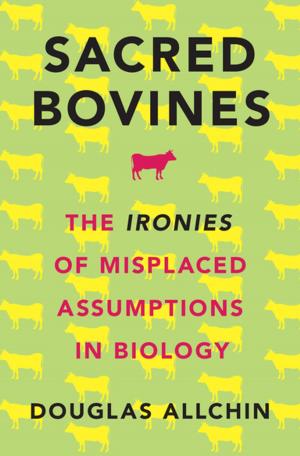A Tale of Seven Elements
Nonfiction, Science & Nature, Science, Chemistry, Inorganic, Physical & Theoretical| Author: | Eric Scerri | ISBN: | 9780199910748 |
| Publisher: | Oxford University Press | Publication: | May 20, 2013 |
| Imprint: | Oxford University Press | Language: | English |
| Author: | Eric Scerri |
| ISBN: | 9780199910748 |
| Publisher: | Oxford University Press |
| Publication: | May 20, 2013 |
| Imprint: | Oxford University Press |
| Language: | English |
In 1913, English physicist Henry Moseley established an elegant method for "counting" the elements based on atomic number, ranging them from hydrogen (#1) to uranium (#92). It soon became clear, however, that seven elements were mysteriously missing from the lineup--seven elements unknown to science. In his well researched and engaging narrative, Eric Scerri presents the intriguing stories of these seven elements--protactinium, hafnium, rhenium, technetium, francium, astatine and promethium. The book follows the historical order of discovery, roughly spanning the two world wars, beginning with the isolation of protactinium in 1917 and ending with that of promethium in 1945. For each element, Scerri traces the research that preceded the discovery, the pivotal experiments, the personalities of the chemists involved, the chemical nature of the new element, and its applications in science and technology. We learn for instance that alloys of hafnium--whose name derives from the Latin name for Copenhagen (hafnia)--have some of the highest boiling points on record and are used for the nozzles in rocket thrusters such as the Apollo Lunar Modules. Scerri also tells the personal tales of researchers overcoming great obstacles. We see how Lise Meitner and Otto Hahn--the pair who later proposed the theory of atomic fission--were struggling to isolate element 91 when World War I intervened, Hahn was drafted into the German army's poison gas unit, and Meitner was forced to press on alone against daunting odds. The book concludes by examining how and where the twenty-five new elements have taken their places in the periodic table in the last half century. A Tale of Seven Elements paints a fascinating picture of chemical research--the wrong turns, missed opportunities, bitterly disputed claims, serendipitous findings, accusations of dishonesty--all leading finally to the thrill of discovery.
In 1913, English physicist Henry Moseley established an elegant method for "counting" the elements based on atomic number, ranging them from hydrogen (#1) to uranium (#92). It soon became clear, however, that seven elements were mysteriously missing from the lineup--seven elements unknown to science. In his well researched and engaging narrative, Eric Scerri presents the intriguing stories of these seven elements--protactinium, hafnium, rhenium, technetium, francium, astatine and promethium. The book follows the historical order of discovery, roughly spanning the two world wars, beginning with the isolation of protactinium in 1917 and ending with that of promethium in 1945. For each element, Scerri traces the research that preceded the discovery, the pivotal experiments, the personalities of the chemists involved, the chemical nature of the new element, and its applications in science and technology. We learn for instance that alloys of hafnium--whose name derives from the Latin name for Copenhagen (hafnia)--have some of the highest boiling points on record and are used for the nozzles in rocket thrusters such as the Apollo Lunar Modules. Scerri also tells the personal tales of researchers overcoming great obstacles. We see how Lise Meitner and Otto Hahn--the pair who later proposed the theory of atomic fission--were struggling to isolate element 91 when World War I intervened, Hahn was drafted into the German army's poison gas unit, and Meitner was forced to press on alone against daunting odds. The book concludes by examining how and where the twenty-five new elements have taken their places in the periodic table in the last half century. A Tale of Seven Elements paints a fascinating picture of chemical research--the wrong turns, missed opportunities, bitterly disputed claims, serendipitous findings, accusations of dishonesty--all leading finally to the thrill of discovery.















